The Biography of
John B. Amos
Civil War Veteran
By
Ann
M. Sinton
Copyright, 2005, not to be reproduced.
Civil War Veteran
The Amos family dates back to at least 1800 in Bedford County, Pennsylvania, with a John Amos being listed in every census up until John B. Amos, the subject of this biography and thereafter. Bedford, Pennsylvania was first settled about 1750 and was known as Raystown. Two years later the name was officially changed to Bedford and in 1766 the town was surveyed and laid out. The county of Bedford was organized in 1771. 15
John B. Amos was born on April 13, 1833 in Bedford Township, Bedford County, Pennsylvania. He was the fourth child of ten and eldest son of John Amos, an arms maker of Bedford County, and Rebecca Border, sister of Daniel Border, a well known arms maker and partner in the company “Amos and Border”. The Amos & Border Company was well known for their model of the Pennsylvania Long Rifle, shown below, in the early 1800’s. 16
Not many details are known of John’s early life, but he begins to show up in records with his christening at the Trinity Lutheran Church in Bedford, Pennsylvania on March 14, 1834.14 In the 1840 census he is listed as a male between 5 and 10 years of age in his father’s household and again in the 1850 census he is listed with his father. 2, 3 By this time he is 17 years old and his occupation is recorded as that of a farmer.13 It is not known what crops John grew, but rye was the major crop grown in Bedford County up until 1860. It was used often for whiskey making. After 1860, general farming was the prevalent description of farming in Bedford county. 27 At the age of 22, John was married to Sarah Mowry of Bedford Township, on May 3, 1855 by the Rev. B.F. Benedict in Bedford, Pennsylvania. 8 In 1858, a John Amos is listed as a “Director of the Poor” in Bedford County. 1 It is not clear, however, if this is John B. Amos, his father John, or one of several other John Amos’ living in Bedford County at that time. By the 1860 Census John and Sarah’s family is recorded in Bedford Township. John is 27 years old, Sarah is 24, Franklin is 2 and Ellen(Elnorah) is 9 months old. One short year later, John’s life follows the path of thousands of other young men with the start of the American Civil War. Leaving behind his young wife, Sarah, 3year old Franklin, 2year old Elnorah and new addition 3 month old Jennie, John musters into his regiment on October 12, 1861 as a private.5 According to Pennsylvania State Archives records, at the time of John’s enlistment he is described as 5’11” with a light complexion, light hair, and grey eyes.19 His initial enlistment into Company D of the 55th Pennsylvania Infantry will last 3 years.
At the start of the Civil War, the call for recruits went answered by men of all walks of life, patriotism being the main motivator for enlistment. Regiments were formed by state and enlistment periods ran anywhere from 3 months to 3 years. When attempting to form local units, public gatherings were scheduled complete with speeches, flag waving, bands, and veterans of previous wars. Some states were able to provide some of the uniforms for the men but women’s sewing groups were counted upon to clothe their soldiers as well. Gray was a favorite color in the early part of the war, causing much confusion during some battles as both North and South used the color. Equipment ran the gamut from obsolete muskets to the modern Sharps rifle. The initial encampment of the company was usually located in their home community which would allow family visits. The first activity would be the election of officers for the company. Captains and Lieutenants were chosen by the men. Training while the company was still in the home area varied. When the time came for the company to depart, the men were granted a furlough to say their goodbyes to family and friends. The actual departure of the unit was a public affair usually marked by a parade thru town. The men would then board a train or boat that would carry them to their final training destination. Shown below are the 55th Infantry Regiment’s official colors.
A ”Bedford Inquirer” newspaper
article dated October 11, 1861 telling of this regiment’s departure was found
and states as follows:
BEDFORD RIFLEMAN
The
Bedford Riflemen under the command of Capt. Thos. J. Lyons and Lieut. Sol. S.
Metzger, left our place yesterday for Harrisburg. They numbered about 60 men. Capt. Lyons’ company is composed of as
steady, orderly and good looking men as have yet left our County, and every man
looks every inch a soldier. The company
before leaving were addressed at the Court House by Dr. O. N. Hickok, and
Gen.(?) G.W. Bowman in quite eloquent and patriotic addresses. At the conclusion of (cash appeals?) they were loudly and
enthusiastically cheered. The company
was followed out of the borough by an immense crowd from the town and
surrounding country. The Bedford
Riflemen leave our place with the unanimous wish of our citizens for their
welfare and safe return to their homes and friends. God bless them!
John’s regiment was formally organized at Camp Curtin in Harrisburg, Pennsylvania.9 The regiment was made up of 10 companies from the following counties: Bedford(D,H, & K), Cambria(A & C), Berks(B), Schuylkill(E), Indiana(F), Dauphin(G), and Blair(I).11 Camp Curtin was named for Pennsylvania’s then Governor, Andrew Curtin. It was located between Reel's Lane, the Pennsylvania Railroad tracks to the east, Maclay Street, and Fifth Street. Camp Curtin became the Federal’s largest camp and it’s proximity to major railroads made it the perfect location for shipping men and supplies to the armies. It’s strategic location also made it a target of the Confederates in both the Antietam and Gettysburg campaigns. 12
At Camp Curtin, drill and discipline were beginning to be taught to the new recruits. The day began with reveille at about 5 or 6 a.m. There was roll call, breakfast call, sick call, call for guard duty, then drill call and dinner call - all before noon. The men had a short period of free time after their meal then came more drilling. Companies were dismissed in late afternoon, but their work was not over. The men had to brush their uniforms, polish shoes and brass in preparation for the nightly retreat exercises which included another roll call, inspection of the troops and a dress parade. Supper call followed this and then yet another roll call after which the men were ordered to their quarters. Taps was the final call of the day. The drills for new recruits were made up of mostly handling arms and practicing maneuvers. Often mock skirmishes were held. The men’s main shelter was the tent. There were several types, some held 12 men and some as little as 4 men. The men were also issued a haversack. This held his cartridge box, bayonet, blankets, canteen, and knapsack. The knapsack held clothing, stationery, photos, personal hygiene items, books, and other personal items. There were also food implements either packed on the knapsack or hooked to the soldier’s belt. On top of everything was the winter overcoat, an extra burden, often discarded to lighten the weight of the pack which could weigh as much as 40 or 50 pounds. Once the initial wave of emotion wore off, the day to day routines quickly became the source of complaints over everything from camp conditions to missing family. Many desertions took place as the war continued. Privates in the Union Army were paid $13 per month, by the end of the war it was only up to $16. Regulations called for soldiers to be paid every two months, but they were lucky to receive their pay at four month intervals. Lieutenants made $105 per month, so John’s promotion to Lt. at the end of the war made quite a difference in his pocket on payday.
This newspaper article from the
November 22, 1861 “Bedford Inquirer” tells of the regiment’s departure from
Camp Curtin in Harrisburg.
Fort Monroe, Virginia
Port Royal, South Carolina
During this more than 2 year tour in South Carolina, the 55th participated in various actions under the command of Col. Richard White of Indiana Co., Pennsylvania.11 In February of 1862, the regiment was transferred to Edisto Island, where it met it’s first opposition. On March 29, 1862, several of the companies were attacked by Confederate troops numbering approximately two thousand. The rebels were repulsed, but about 20 Union soldiers were killed or wounded. During this action, John’s service record shows that he was sick in quarters for the months of March and April 1862. His records do not specifically detail the reason for his “sick in quarters” status, but some common ailments were diarrhea, dysentery, malaria, typhoid, yellow fever, rheumatism, pneumonia, scurvy, and tuberculosis. Outbreaks of smallpox and measles were common as well. Many more deaths during the civil war were attributed to disease than to battle wounds.18 In May of 1862, John was promoted to Corporal.
About 13 years after I wrote up this biography, one very interesting story came about because of a letter written by John Amos to his wife Sarah the day after contact was made by John's Company with a Confederate unit which became known at the Battle of Simon's Bluff. This letter was shared with me by a fellow descendent of John B Amos. Letter below. 35
The planter and crusader mentioned on page 1 of the letter
are the boats that took them up river. The action taken on June 21, 1862(the
day before the letter was written) became known as the Battle of Simmon’s
Bluff. The USS Crusader was assigned to
the South Atlantic Blockading Squadron and was tasked with preventing the
Confederates from operating in the area from Cape Henry, Virginia south to Key
West, Florida. The USS Planter was
originally a Confederate vessel, but was captured by the Union Navy and sent to
serve in the South Atlantic Blockading
Squadron as well
through the summer of 1862. On a joint expedition, the USS Crusader and Planter carried troops to
Simmons Bluff, Wadmelaw River, South Carolina,
where they destroyed a Confederate encampment.
The Battle of Simmon's Bluff was a minor and bloodless Union victory,
fought June 21, 1862, in Meggett, South Carolina. Union
forces had laid siege to Charleston, which was being resupplied from a nearby
railroad. Union forces were eager to capture the city, so they sent the 55th
Pennsylvania Infantry regiment to
sever the rail line. The 55th Pennsylvania departed by sea shortly before the
battle in search of a place to land closer to the railroad. On June 21, the
55th Pennsylvania came ashore at Wadmalaw Sound. Union forces discovered an
encampment of the 16th South Carolina Infantry regiment, and quickly razed the
encampment and engaged the Confederate forces. The Confederates scattered after the encampment was
razed and were unable to launch an effective counterattack. There were no
reports of injuries on either side. After the raid, the Union forces returned
to their ships and abandoned their original objective, which was to interrupt
the rail line to Charleston. 43
In a report from Col. Richard White of
the 55th Regiment in reference to actions taken at these battles, he
commends the companies that participated.
John’s Company D among them.
From Col White’s report:
“Near Frampton the command was ordered
to double-quick which was promptly obeyed.
At this point it came under a very heavy and destructive fire from shell
and canister from the enemy’s batteries.
The order was received to form in column and advance; and, although the
most of the command had never been exposed to a cannonade so severe and so
sustained and men were falling rapidly from it’s effects yet the order was
executed with admirable promptitude and precision, the officers, with one
exception, setting a noble example, which was imitated by the rank and
file. The order was then received to get
under cover for a time, while our artillery operated against the enemy’s
guns. Then the order was sent to
charge. Together with the 47th
PA Volunteers and 6th CT my command rushed, in and although the
ground was exceedingly difficult, covered with a dense thicket, with a swamp in
front, our men, with remarkable energy, at once overcame these obstacles, swept
over the hostile position, and rapidly pursued the fleeing enemy. The pursuit was continued to Pocotoligo where
the enemy had again taken up a strong position, broken the bridge over the
creek in his front and while re-enforcements were arriving to his support
opened a heavy fire of cannon and musketry.
My command, having come up at the double-quick was ordered into position
on our left. In obedience to an order
for two companies of sharpshooters to operate against the enemy’s batteries,
Companies A and B, were thrown forward.
These companies well armed with good weapons, went in with the greatest
enthusiasm and their deadly fire soon caused the enemy’s cannonade to slacken,
and more than held their own in the contest with the enemies
sharpshooters. This, being carried on at
short range, was quite bloody. Companies
D and E, were also sent forward to support our battery, but being armed with
altered smooth-bore muskets their fire could not compete with that of the
enemy’s splendidly armed sharpshooters.
They were brought off. These
gallant men fulfilled every duty practicable to men in their situation. Company D fired as long as they could load
their muskets, which after a few rounds became so foul that a cartridge could
hardly be rammed down, and even then many of the cones were blown out of the
seats. The experience of Company E in
the matter of arms is the same as that of Company D. In the latter company the captain received a
ball through his sleeve and four of his men were wounded. Captain Bennett of Company E, was killed on
the spot. I trust I am within the line of duty in respectfully claiming the
attention of the general commanding to the fact that the usefulness of my
command was limited by its armament. So far as it was equipped with rifles and
Springfield muskets so far was it of
account. I was compelled to withdraw
gallant men and capital marksmen because the weapons they carried were worse
than useless. True our bayonets might
have counted for something, but that was the fault of the enemy, not ours. He did not wait to give us an opportunity to
handle them. Late in the evening I was
ordered to withdraw my command beyond the second line of defense and from there
to Mackey’s Landing. This was
accomplished in the best of order. My
command remained there until all the troops had embarked, being the last to
quit the spot.”10
Beaufort, South Carolina
According to John’s pension records,
he reenlisted along with the rest of his regiment as a Veteran Volunteer and
John was promoted to !st Sergeant on Jan. 1, 1864. On Jan. 22 1864, the regiment left for
Harrisburg to be dismissed on furlough, which lasted until Mar. 23, 1864. John is personally listed in his service
record as absent on furlough during January and February and present with the
regiment in March, April and May. He
must have visited home and family in Bedford during this furlough because later
in the year, in October 1864, he would become a father to his fourth child, a
son, Charles. On Mar. 23, 1864, the 55th
Pa. returned to South Carolina, but only for a short time.
The Battles of Swift Creek &
Chester Station were fought on May 9-10, 1864 in Chesterfield Co.,
Virginia. The 55th
participated in these battles which had neither Union nor Confederates being
able to claim victory. At 5 am on May 9th,
the brigade began it’s duty of tearing up and burning several hundred yards of
the Richmond & Petersburg Railroad track, disabling a roadway that served
as a line of communication and transportation, and destroying telegraph lines. During this operation no enemy troops were
sighted. About 10:30 am the brigade
began marching toward Swift Creek and came upon another Union brigade who was
engaged with the enemy. !st brigade was
ordered to support these troops and as a result were exposed to artillery
fire. The 55th took some
casualties in this action. The firing
ended about dark and the brigade was able to camp close to a small church near
Swift Creek. The next morning, about 10
am, the brigade was ordered to the support of another division who was engaged
with the enemy near where the railroad had been torn up. By the time they arrived the enemy had
already retired. The men of this brigade
were praised for their performance of these two days under the excessive heat
of the sun “without much apparent suffering”.10 After being repulsed at Swift Creek, General
Butler returned to his entrenchments at Bermuda Hundred, Virginia. On the 12th of May 1864, he moved
his troops north to engage the Confederates at Drewry’s Bluff, still in
Chesterfield Co, Virginia. In stiff
fighting, Butler was successful but still cautious which gave Beauregard time
to fortify his troops. At dawn on May 16th,
the Confederates attacked. The 55th,
feeling the full force of the enemy attack, held their ground in a position on
the extreme left of the line, until they were almost completely surrounded,
when three companies (C,D, and E) led by Col. White attempted a charge, they
found that the enemy was too strong for them.
The Colonel’s horse was shot from under him and he was taken prisoner
along with some other of his men. The
fog ultimately created disorganization on the Federals part and Butler again
withdrew to his Bermuda Hundred lines and became “bottled up” there.10
The loss of men to the regiment in those 8 days was 15 officers and 300
men. It was during this action on May 16th
that John Amos received his first injury.
The incident is described by Josiah Hissong, of his Company. Josiah says that “I was present when Amos was struck with a
piece of iron, a joint bar for joining rails together. It was fired from a cannon on a truck car, I
helped Amos out of the ditch where he was knocked by the blow. The joint bar first struck the track several
times before striking Amos, therefore it was partly spent but came with force
enough to knock him down into the ditch.” 5 John’s injury was to his hip. And the Battle at Drewry’s Bluff was another
Confederate victory.
Grant’s soldiers digging potatoes – on the march to Cold Harbor, May 28, 1864 From: ehistory.com – “The Photographic History of the Civil War, Vol. 3”, Francis T. Miller. |
Breastworks at Cold Harbor, Virginia From: ehistory.com – “The Photographic History of the Civil War, Vol. 3”, Francis T. Miller. |
From: ehistory.com – “The Photographic History of the Civil War, Vol. 3”, Francis T. Miller.
From: ehistory.com – “The Photographic History of the Civil War, Vol. 3”, Francis T. Miller.
|
|
John Border Amos, of the 55th
PA Inf, fought and was wounded in this battle on June 3, 1864. The following photos show what is left of the
original earthen works for both the Union and Confederate forces at this
location. After talking to the NPS
Ranger at the visitor’s Center at the Cold Harbor Unit of the Richmond National
Battlefield, I believe that she pointed me to the almost precise spot where
John B Amos was most likely positioned before the charge made by his unit. He was under the command of Gen. Smith and
there is a street sign pictured that would seem to pinpoint the general
location of the General’s troops. I have
included the NPS signage at each site and views of the surrounding land. The first earthen works shown are on the
Confederate side. They were more
fortified and higher than the Union trenches.
The two lines are within sight of each other, maybe a few hundred yards
apart. You can definitely picture the
action here. I would think there were
fewer trees however. All photos taken by
Ann Sinton. 42 Copyright 2013 Ann Sinton.
Looking up the Confederate earth works
Map of positions – 55th with Martindale
Looking across the land toward the Confederate positions
Cold Harbor Campaign Map
John was wounded at Cold Harbor on June 3rd. His injuries were a gunshot wound to the jaw and an injured wrist as described in his pension file. He was wounded by a piece of shell which fractured the right jaw, cutting off the arteries, lacerating the neck causing stiffness in the neck and also the left wrist was knocked out of place. Wounds of the neck and head area were often tended to after those of the extremities because they were usually considered mortal, so John can be counted as extremely fortunate to have survived ,not only the wound, but the treatment as well. The wound would have first been dressed by the regimental surgeon before John’s being sent north to Mt. Pleasant General Hospital on June 8th, 1864. Most of the thousands of soldiers wounded or killed at Cold Harbor were left on the battlefield for 4 days before an order was issued by General Grant to retrieve them. John may very well have been one of these. His wounds were serious enough this time to keep him hospitalized as his service records show that he was “in hospital” during July and August of 1864. Medical care during the Civil War was of a varied state, depending upon the medical officer in charge, availability of supplies, and the cleanliness of the camp. Field hospitals were one of the first places a sick or wounded soldier would be treated. Dependent upon the severity of your wound or sickness, you would be evacuated to a Regimental or General Hospital as our John was after the wounds he received at Cold Harbor. Some hospitals were showpieces, but many more were makeshift, utilizing warehouses, schools, churches, etc. Poor ventilation and sanitation allowed many diseases to run rampant and it wasn’t long before even the newest recruit would come down with one malady or another. On Sept. 8, 1864 John’s records show that he was committed to Old Capitol Prison, in Washington D.C., “for suspicion of being implicated with counterfeiters of US Treasury notes”. Furthermore, it is not clear whether he was in hospital there as well. However, he is listed as “in hospital” until February 28, 1865. The Secret Service was organized to conduct investigations into the counterfeiting problem arising during the Civil War. Many individuals were detained with no charges pressed. Conditions in jails and prisons were sparse at best. One description tells of a cell in Detroit with only an iron bedstead with a mattress full of seaweed or straw and a tub “for nature’s necessities”. Some cells were only furnished with a bench for a bed, no blanket for warmth. Some prisoners were left in irons overnight with no food as well. Conditions at Old Capital Prison may have been a “little” more hospitable as they hosted many high profile prisoners. Military Justice was not much better, as officers were given lesser punishments or none at all for the same offenses committed by an enlisted soldier. 18 10Punishments also varied from regiment to regiment depending upon the commander’s wishes.
Typical Union Army
Field Hospital
Typical Federal
encampment 1862
Mt Pleasant General Hospital was one
of 50 wartime hospitals located in the Washington DC area. It was northwest of
the city. Mt Pleasant opened in March of
1862 and remained open until a few months after the war ended. It was built with the purpose of treating the
injured soldiers of the Civil War. In
May and June of 1864 alone, it treated more than 5000 patients. After the Battle of Cold Harbor, our John
Amos would have been loaded onto a steamship for a journey up the Potomac River
into Washington, there being greeted by volunteers and then being taken by
ambulance to the hospital. Mt Pleasant
was a large facility covering around 1 ½ acres.
The structure was 380’ x 200’ and was supposed to hold 400
patients. But the hospital actually had
over 1600 beds. This was accomplished by adding tents to house the overflow of
patients. The hospital building is no
longer standing but as located near today’s intersection of Park Road NW &
14th Street NW. 29[1]
30[2]31[3]
Steamer boats at White House Landing, Va on Pamunkey River
Historical
Markers at former location of Mt Pleasant Hospital
Mount Pleasant General Hospital
2 prints of the same image of Mt Pleasant drawn by Charles
Magnus
Old Capitol Prison was located on the
present site of the U.S. Supreme Court building at First St. and ‘A’ St NE in
Washington DC. The original building was
erected about 1800 as a tavern and boarding house. It remained as such until
the British burned the U.S. Capitol building in 1814, during the War of 1812.
On 8 December 1815 the U.S. Congress leased this building for their use. In
1817 President James Monroe was inaugurated on a platform outside the Brick
Capitol, as this building became known. By 1825 the new U.S. Capitol building
was built and this temporary structure became, among other things, a boarding
house, a school, and a hotel at times. It also became known as the Old Capitol.
In 1853, Senator Isaac P Walker (Wisconsin), Representatives Orlando B Ficklin
(Illinois), and Representative Sampson W Harris (Alabama) resided in Mrs.
Hill's Old Capitol. By the time of the
American Civil War in 1861 it was a vacant building again. During the civil war
this building again was inhabited, this time as the Old Capitol Prison. It
housed both Confederate and Union prisoners as well as prisoners of state. Some
famous prisoners were Belle Boyd and Rose O’Neal, confederate spies, Captain
Henry Wirz, commander of the infamous confederate Andersonville prison in
Georgia, and the April 14,1864 Lincoln assasination conspirators. Captain Henry
Wirz was hanged 10 November 1865 in the Old Capitol Prison yard, and was the
only Confederate tried and hanged for war crimes. Four of the Lincoln conspirators, Lewis
Paine, George Atzerodt, David Herold, and Mary Surratt were hanged in the yard
of the Old Capitol Prison on 7 July 1865. 28
Old Capital Prison, Washington, D.C.
While John was in the hospital and prison, his son Charles was born in October of 1864. John’s regiment continued to see action, participating in the siege of Petersburg and Richmond from June 1864 until April 1865, as well as the pursuit of Gen. Lee in April 1865. In March and April of 1865, John is shown as in custody of Col. Baker, Chief of Detectives Washington, DC and was then delivered to civil authorities for trial on May 30, 1865. While John was in custody of Col Baker, on April 9, 1865, General Robert E. Lee surrendered at Appomattox and on April 14, 1865, President Abraham Lincoln was assassinated by John Wilkes Booth. John’s regiment, the 55th PA, was present at Appomattox for the surrender and thereafter sent to Richmond, Virginia, where they stayed until July 1865. The results of John’s trial, if there was one, are not known at this time, so one can only surmise that either charges against him were dropped or that he was found innocent, since his service records show him being discharged on June 8, 1865 for promotion to 2nd Lt. in his same company and regiment. In newly organized units, the initial officers were elected by the men. Thereafter, promotions came down from the regiment’s Colonel. Generally, Sergeants were promoted to Leuitenant because of a vacancy. Promotions to recognize valor occurred occasionally, but that would have been the exception. On June 12th , John was commissioned to 1st Lt. And on Aug 30, 1865 John mustered out of his regiment in Petersburg, Virginia as a 2nd Lt.1 and proceeded to Harrisburg, where he received his final pay. There the regiment was disbanded and they returned home. About one year later, his daughter, Annie was born in September 1866. Annie was followed by Ralph in 1869, Ross in 1871, Rena in 1873, Sallie in 1875, and Mary in 1877. John’s father, John Amos the gunsmith, would survive to see his son come home from war only to pass on 2 years later. His mother, Rebecca, lived until 1888. John & Sarah Amos, as well as, John & Rebecca Amos are buried near each other in the Bedford Cemetary on Rt. 220
John and family show up in four more census reports. In 1870, the first one after the war, the family is living in Bedford Township. John is 36; Sarah, 30; Elenora, 9; Jennie, 8; Charles, 4; Ann Rebecca, 3; and Ralph, 1. John’s occupation is farm worker and Elenora and Jennie attended school that year. In 1880, John and Sarah have increased their family again and are still living in Bedford Township. John, 46, is now listed as a laborer. Sarah, 42, is keeping house. The children living with them are: Jennie, 19; Charles, 16; Annie, 14; Ralph, 11; Ross, 8; Irene, 6; Sallie, 5; and May, 3. All of the children, except Sallie and May, attended school that year. Interestingly, the census taker that year was John’s brother, Josiah Amos, age 32. The 1890 census was lost in a fire so we do not know John’s family’s circumstances that year, however the 1890 Veteran’s Schedule does survive for that census year. It shows that John was living in Bedford Township at the time and was a civil war veteran. A disability of rheumatism is listed. The family shows up again in Bedford Township in 1900, which would also be the last one for John and Sarah. John is now 67 years old but still working as a laborer. Additionally, he is able to read and write. John does not own his home, but is listed as renting. John and Sarah have been married for 48 years by this time. Sarah is 65 and has 9 of her 12 children still living. She is listed as being able to read and write as well. Three daughters, Anna, Sally, and May are still living with them. A granddaughter, Virginia Arnold, age 10, probably daughter of Elnorah Amos Arnold and William Henry Arnold, also lives with them at this time. A stairbuilder, George Householder, and his wife and son are listed as boarders in John’s household, but are actually John’s daughter and family. John’s veterans pension was only about $ 17 a month and even tho he lists an occupation, he also states that he was unemployed for 6 months that year. John Amos is also listed as a member of the local GAR post for Civil War veterans. This would be Post #332, the Maj. William Watkins Post. This Post met on the 4th Tuesday of each month according to the book, “History of Bedford, Somerset and Fulton Cos. of PA.” The GAR was founded in 1866. Membership was limited to honorable discharged veterans of the Union Army, Navy, Marine Corps or the Revenue Cutter Service who had served between April 12, 1861 and April 9, 1865.
In 1890 a memorial was erected to honor the Civil War dead. It is currently standing at the corner of Julianna & Penn Sts. In Bedford, Pennsylvania.
John Amos wrote the above letter in 1896 to request an increase in his veteran pension.
Letter written by Josiah Hissong in support of John B Amos’ pension request
John’s obituary from the Bedford
Gazette, February 22, 1901 (Page 1) reads:
""Lieut. John Border Amos
The subject of this sketch was born on
April 13, 1833, on the old Amos farm near Bedford now owned by Adam Sellers and
died on February 20, 1901, at his home in Bedford township. He was aged
sixty-seven years, ten months and seven days. The deceased was a son of John
and Rebecca Amos. He served his country during the civil war as a member of
Company D, 55th regiment, and Pennsylvania volunteers, enlisting as a private
on October 12, 1861. He was promoted successively to corporal, sergeant, 1st
sergeant and to second lieutenant, June 8, 1865, and was mustered out on August
30, 1865. At the battle of Cold Harbor Lieutenant Amos was severely wounded. He
married Miss Sarah Mower, daughter of Mr. and Mrs. Andrew Mower, of Rainsburg.
Twelve children were born to them, three of whom—William, Frank and an infant
daughter—preceded him to the spirit world. His wife and the following children
survive him: Mrs. William Arnold, of Bedford township; Jennie and May, of
Philadelphia: Charles, of San Jose, Central America: Annie and Sallie, at home:
Ralph, of Bedford township: Ross, of Altoona, and Mrs. George Household, of
Pittsburg. He is also survived by four brothers and two sisters—Daniel W., of
Saxton; Samuel B., of Bedford township; Frank M. of Hendricks, W. Va.; Josiah,
of Bedford borough; Mrs. Rebecca Akers, of Altoona, and Mrs. Elizabeth
McMullin, of Missouri. Funeral services will be held tomorrow afternoon at two
o’clock at the home of decedent and will be conducted by Rev. M. L. Culler, of
the Lutheran church. Interment in the Bedford cemetery.
Lieutenant Amos was an enthusiastic
hunter and an ardent disciple of Izak Walton. He knew the haunts of the big
bass and timid trout and frequently acted as guide for fishing parties composed
of guests at our summer resorts. He was an honest, kind-hearted man and had
many friends who will sincerely mourn his death. ""
|
|
 42
42Tombstone reads:
John B. Amos
Co. D
55th Regt. PA Vol.
Died
Feb. 20, 1901
Aged
67 yrs 10 ms
& 7 ds
Not my will but thine be done
Elnorah Amos Arnold - Daughter of John B Amos
John B Amos Family
By now you are probably wondering how we are all related to this farmer-soldier, John Amos. The eight children of Floyd and Elizabeth Heacock are John Amos’ great great grandchildren. Elizabeth Arnold Heacock is John Amos’ great granddaughter. Ralph Arnold is John Amos’ grandson. Elnorah Amos Arnold is John Amos’ daughter. It is hoped that you found this biography interesting and informative. As always these things are a work in progress and I hope to find out even more about our soldier, Lt John Border Amos.
Sources
for John Amos Biography
http://www.itd.nps.gov/cwss/battles.htm
11. Bates, Samuel P. History of the Pennsylvania Volunteers, 1861-65, Harrisburg, 1868-1871.
12. History of Camp
Curtin - http://www.campcurtin.org/campcurtin/about.html
13. 1860
Census Bedford Township, Bedford Co., Pennsylvania - www.ancestry.com
14.
International Genealogical Index (IGI) at www.familysearch.org
15. “History
of Bedford” manuscript penned by Helen Heacock Davidson for an English class in
1926.
copyright:
Capitol Preservation Committee
42. Ann Sinton Personal Photos from trip to Cold Harbor Battlefield in 20
43. Wikipedia
44. "Civil War Soldiers of Bedford County Pennsylvania" by Kevin Mearkle, 2021
Please give credit and post a link to my blog if you intend to use any of the information written here. My blog posts are © Ann M Sinton 2025. All rights reserved


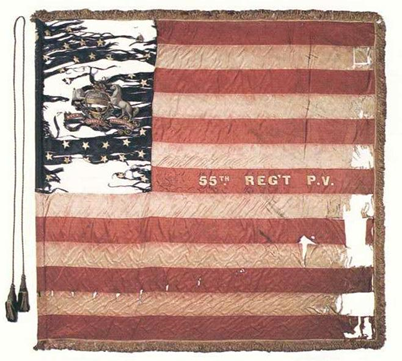

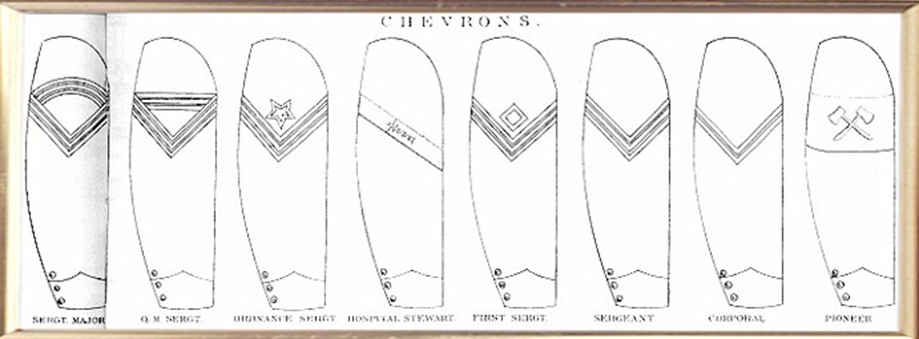
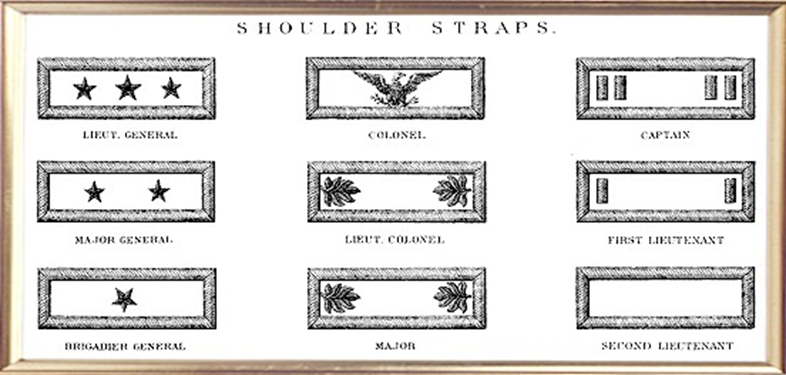





















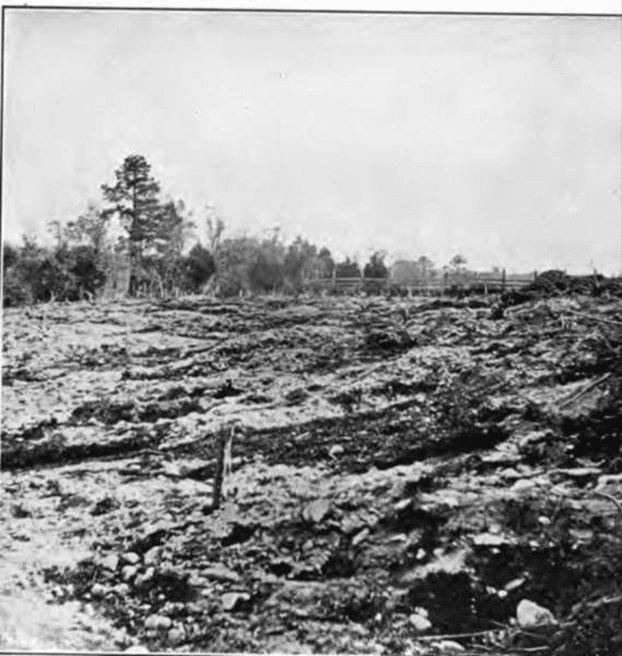

























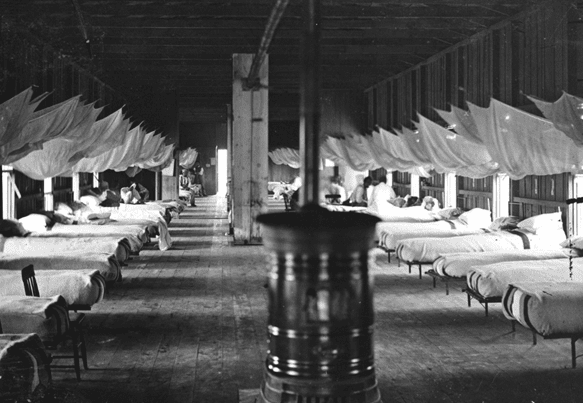

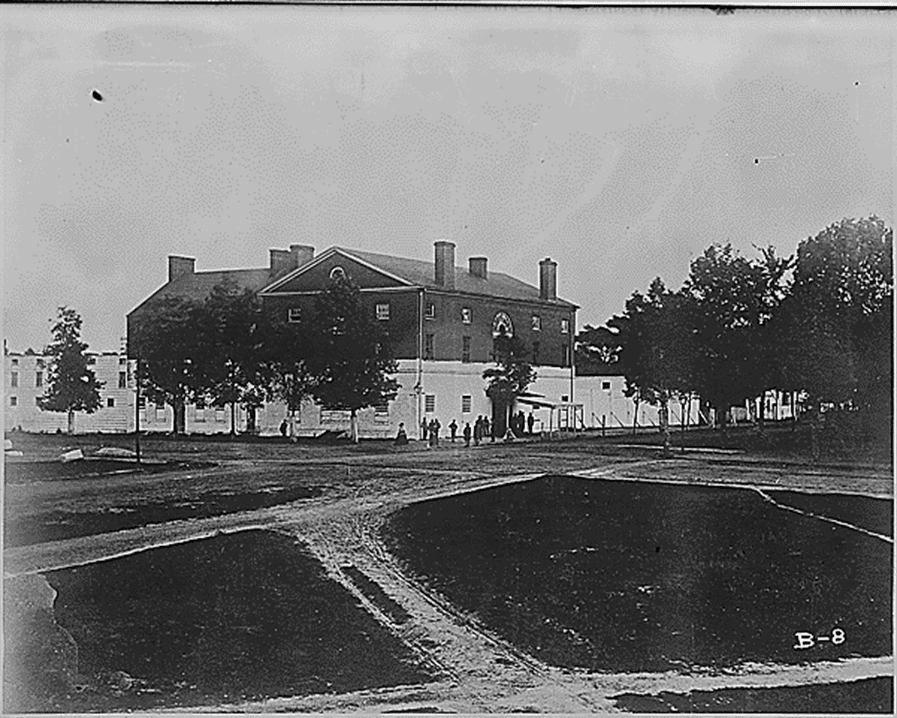



















No comments:
Post a Comment